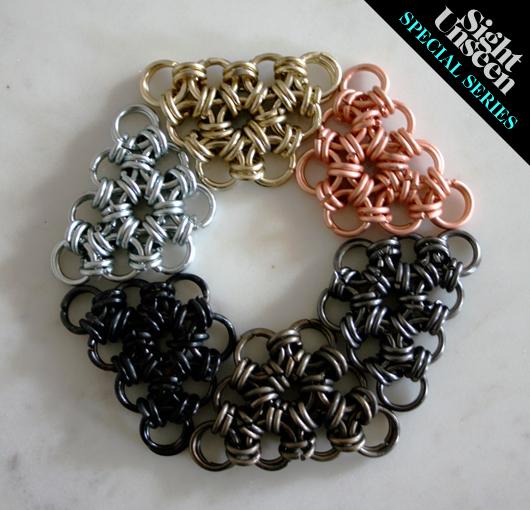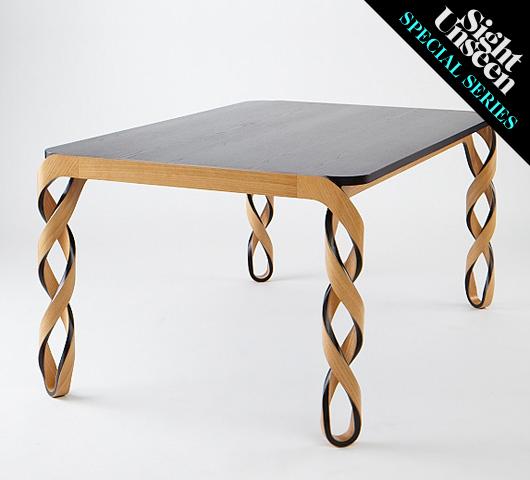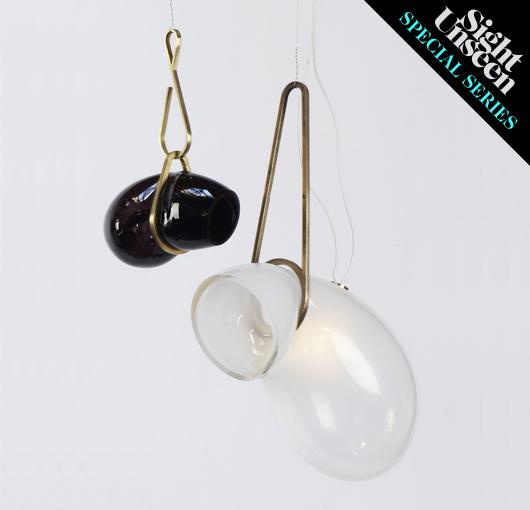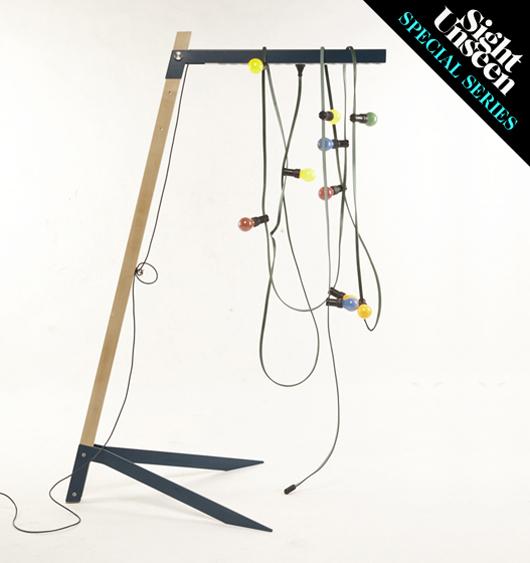
04.12.11
Q+A
Carwan Gallery Launch: My Bauhaus is Better Than Yours
In the Ventura Lambrate district at this year’s Milan Furniture Fair, half a dozen talented young designers and design brands from around the world are coming together to launch new work under the banner of the soon-to-open Carwan gallery in Beirut, with Sight Unseen as media sponsor. Through April 15, we’ll be showcasing each of the participants on the site by documenting how their new products were made, plus what their studios looked like during the development process. Next up are designs from My Bauhaus is Better Than Yours, a loose collective of young German studios — most of whom studied at the Bauhaus University in Weimar — that banded together two years ago as a way to mount exhibitions in design hotspots like Milan and DMY Berlin. The group has since evolved into a full-fledged design label with the ability to manufacture and distribute the designs of its members, and it has plans to launch a webshop later this week. We spoke with Daniel Klapsing, one half of the Berlin-based duo 45 Kilo and de facto leader of the newly formed label, and put together a preview of designs from several of the group’s other members as well.
Please tell us what you’ll be launching in Milan next week, and how it was made.
“Our Jack in the Box light has been a long time coming, and its production came to us in steps.
Step one: Three years ago we made a table called Socket Table, which we designed based our own needs for work. The idea was to create a big working desk for several people with all of their electronic devices. For a while we thought about how to organize the cables in a neat and German way. Suddenly we realized that the problem existed only in our heads. We were thinking that cables and sockets are ugly, so therefore we needed to hide them. But actually that’s wrong.
Repetition helps if you need to make something look very natural, which is how we came up with a functional pattern (128 sockets) all around the edge of the table. This way you create an ever-changing scenery for your electrical-device-landscape in a very easy way.”
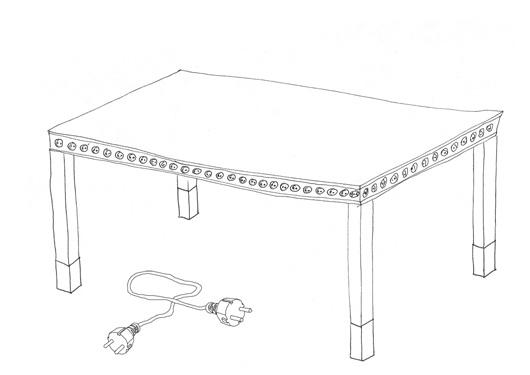
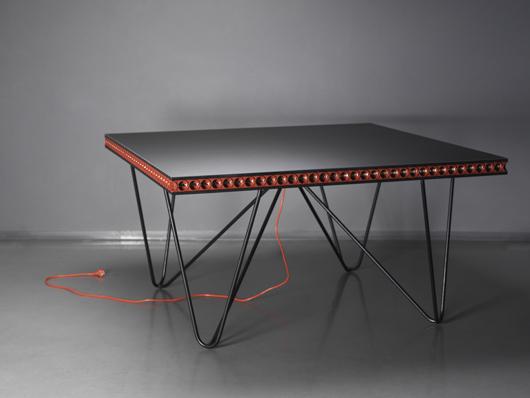
“Step two: The first socket concept got good feedback. But the table is huge and very expensive to produce and most of our customers are neither rich nor do they have huge houses. A redesign definitely had to be smaller and cheaper but had to tell the same story.
As our portfolio already contains several tables, it was logical for us not to go for another table. That’s why we turned the socket idea into a lamp, leading to an even stranger and stronger image.”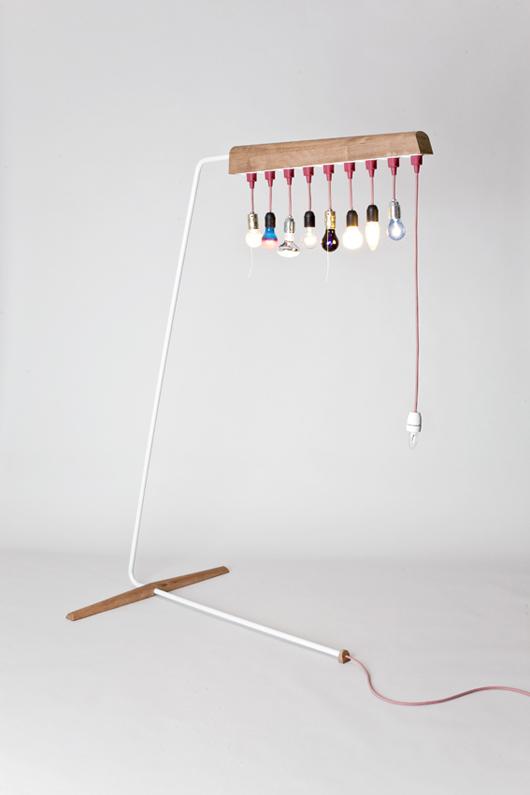
“Step three: Again we had the same problem. The lamp was way too complicated in production, as all of the wooden parts were CNCed on a 5-axis machine in the university workshop. For a small series, this would have been too expensive, so we made another tweak. What we liked about the first prototype was the combination of wood and steel. So we kept that and simply switched the materiality of the parts. This turned out to be much easier in production. And this is why this lamp (or multiple socket) will soon be available via My Bauhaus is Better Than Yours.”
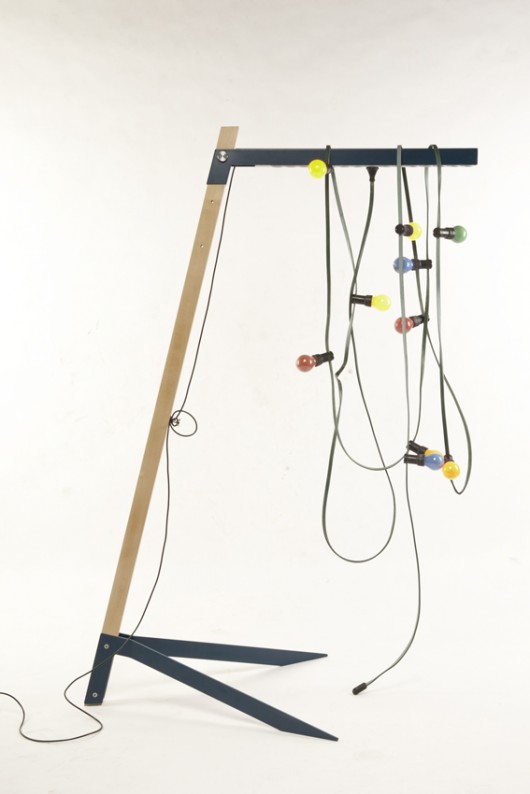
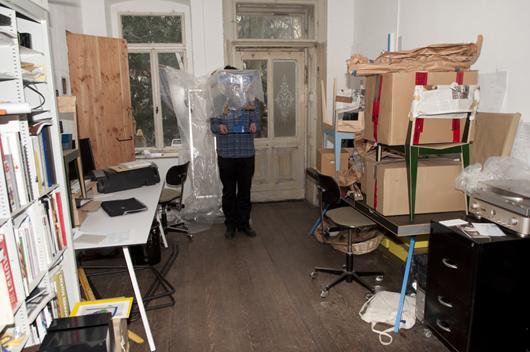
Please show us an image of your studio at the moment and describe what’s going on in the photo.
“This is what it looked like one week before heading to Milan. Since we co-founded the new My Bauhaus Is Better Than Yours label, we are not only busy with our own designs but also with the designs of our friends.”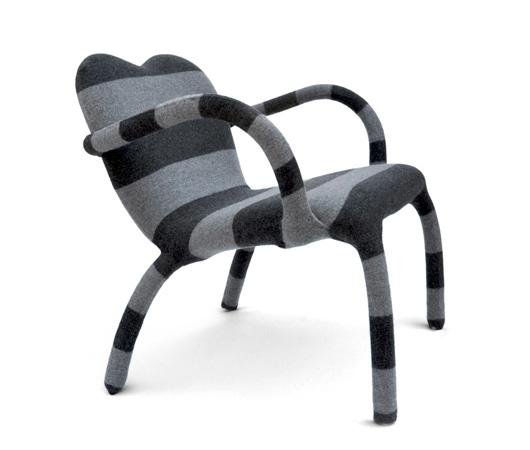
What was the best design you saw at last year’s Milan fair, and what are you looking forward to doing or seeing this year?
“Our favorite design last year was the jumper chair by Bertjan Pot for Established & Sons (above). This year, we’re looking forward to DJing at Q21 on Wednesday.”
Below are three additional designs from the first production series of My Bauhaus is Better Than Yours.
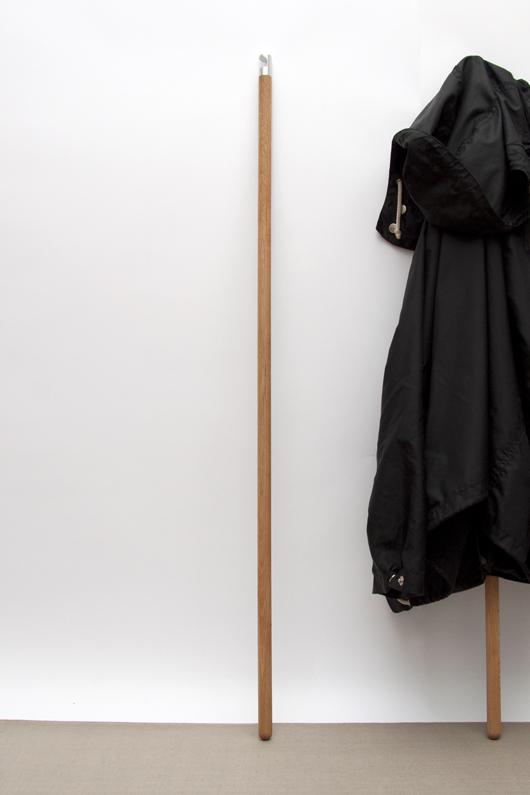
Peter Schwartz, Object of Utility 1: “After seeing and doing some exhibitions last year I was a bit fed up with design, including my own. So many objects are just variations of variations of objects which have existed for decades. They are things nobody really needs, objects for a new season of taste, without innovation or a real need.
I wanted to create an icon of a multifunctional tool, which would symbolize that most of the time there is not much need for more than a simple tool. The stick is one of the first tools of humanity — an object that provides power, helps in activities and actions, and therefore makes everyday life easier. In the past, it’s been used to get food, push and pull things, point at something, or used as a walking aid. The stick is one of the most all-purpose objects in our society.
The Object of Utility 1 is made out of a wooden stick and a milled metal hook, beech and aluminum.”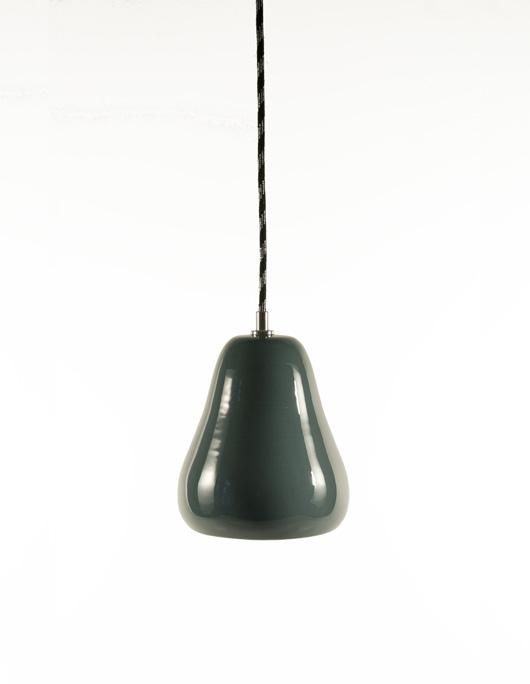
Laura Strasser, Ribbeck: “I will show Ribbeck, a porcelain lamp in the shape of a pear. The lamp was designed during my residency at Guldagergaard at the International Ceramic Research Center in Denmark. Ribbeck is a character from a famous 19th-century poem, which most German-speaking kids learn by heart. Ribbeck is a generous man who loves to give his pears to kids from the neighborhood.”
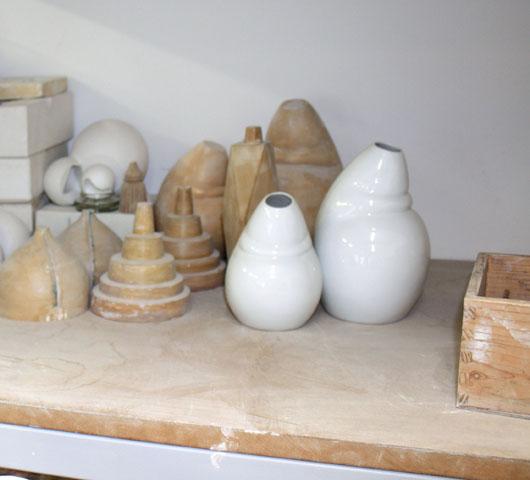
Marie Burkhard, Sid & Chad: “Sid & Chad are two porcelain bottles for serving drinks. Their shapes remind us of heavy potbellies — compact and soft, dull and vital at the same time. They seem to turn towards each other, then ignore each other and turn away.
The bottles are slip cast and then neatened and glazed by hand, which makes each of them a unique piece and character.
I undertook a long series of form studies to develop the two shapes. Which shape could give the objects a personal gesture? What makes them interact? What affects us about an object?
After being quite sure about the shapes, they had to first be made in plaster. Because they are asymmetrical, it was impossible to make them on a rotary disc, so I carved them out of a plaster bloc and sanded them as long as necessary. The finer the surface at the beginning, the finer the mold and the resulting porcelain piece will be. I made a four-piece mold from plaster and began casting immediately. As usual, the first pieces collapsed, but the third or fourth piece was okay and I could begin production.”
